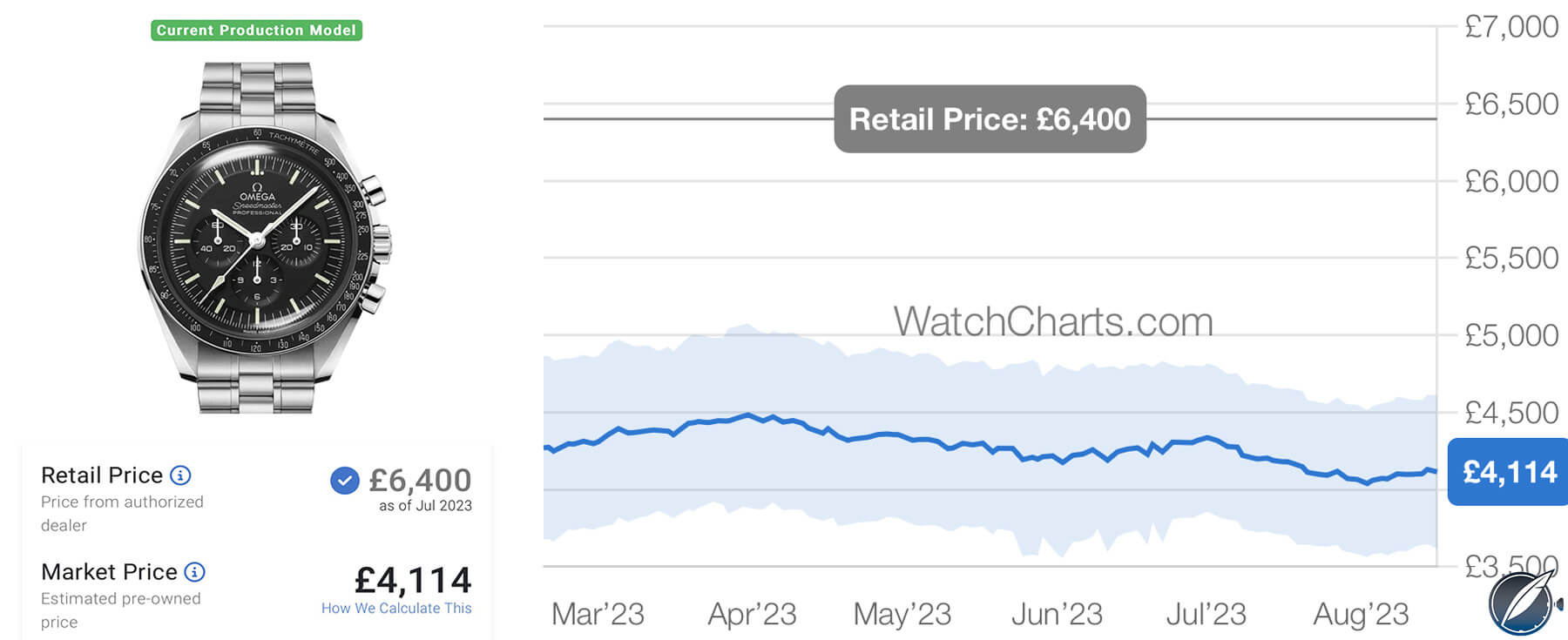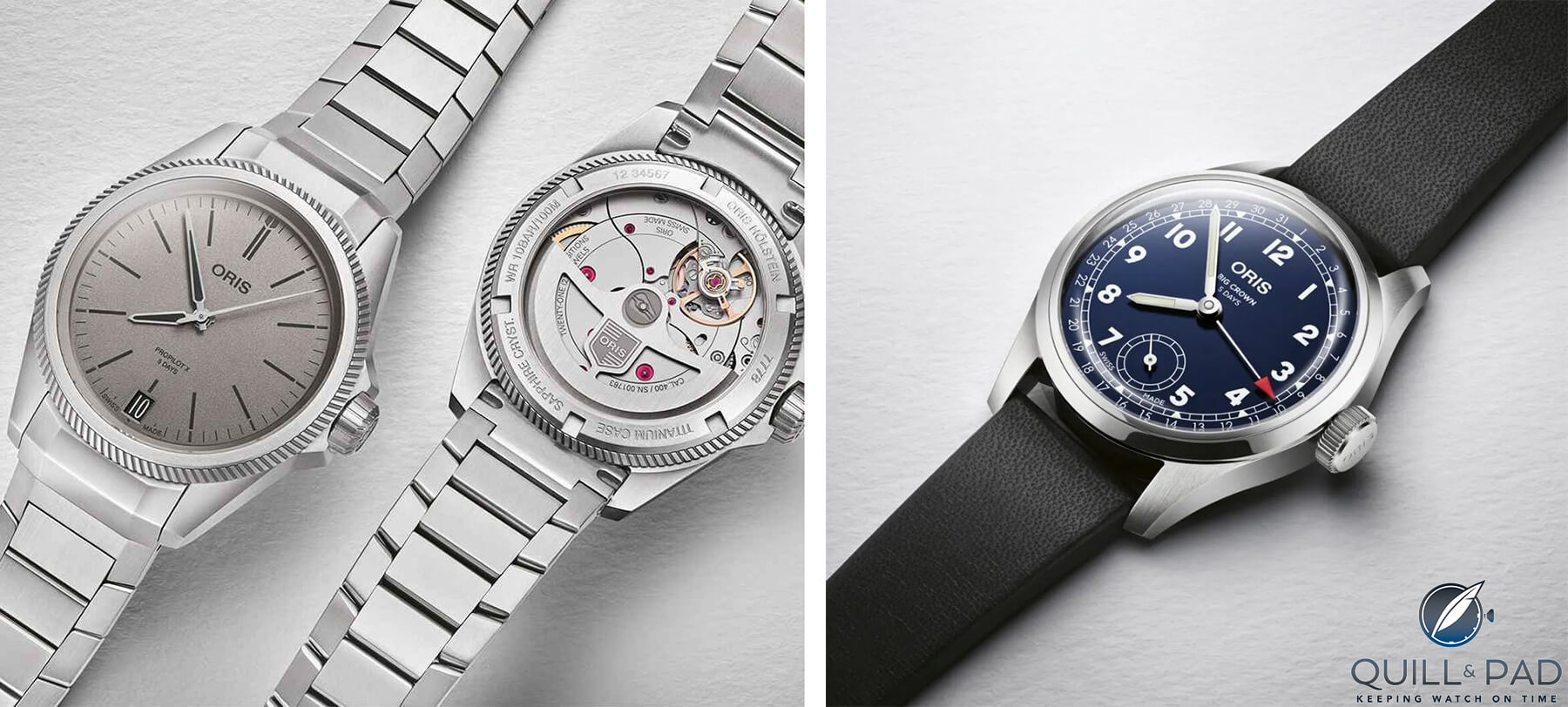—————————————————————————————————–
As mentioned, some brands are moving upwards in the market. Oris is one name that is, in the right way. They are improving their watches and, in doing so, entering a new price point and competitive landscape. It all starts with their movements. They first launched an in-house movement, the Caliber 110, in 2014. It is a hand-wound, 10-day power reserve movement with several variations launched since. At 34mm, this movement is on the large side and so was only found in their larger watches.
In 2020, however, Oris rectified this by releasing the Caliber 400 – an automatic, 5-day power reserve, non-magnetic movement. The Caliber 400 is efficient and accurate, achieving- 3/+5 seconds per day. The best part is that the movement is smaller and now fits into more popular The best part is that the movement is smaller and now fits into more popular watch sizes. To house the movement, Oris has introduced new designs, such as the ProPilot X, which is fully titanium. ProPilot X, which is fully titanium.
Oris
Newer releases of the Big Crown also feature a variation of this caliber. All of this does come at a price, and these newer pieces see price increases of over 50%. This is warranted, but my question is, will Oris be successful in this new endeavor? Technically, I don’t see why not. On the other hand, if they put a Big Crown for $ 3,700 next to another at $ 2,200 on their website, will the average consumer be convinced? I am not sure, and there are numerous watches that can be found for a discount or on sale.
I want Oris to succeed. I just hope they can continue to convince the wider audience and take that repetitional step upward to match their products.
Is There a Point Where Watch Prices Are Too High?
Following on from the Oris discussion, the big question that I think is on everyone’s mind is – is there a point where watch prices are just too high? Before getting into this, consider the Omega Speedmaster Moonwatch.
In May 2019, the Hesalite Moonwatch had a retail price of €4,700 (found on speedywatches.com), but today it is €7,400. While there have been improvements to the watch, such as an updated dial, better bracelet, and Co-Axial 3861 movement, it still amounts to a 57% increase in just four years.
Another example is the JLC Reverso. The Reverso Duoface had a retail price of €9,100 in April 2022, and by January 2023, that had risen to €13,100 (+44%).

Omega pricing
As highlighted when discussing Oris, the price increases come down to a combination of factors such as more demand than ever for luxury watches given access to information, social media, those viewing watches as an asset class and then inflation on top. It is easy to see why brands are jumping on this opportunity, especially those with famous designs such as Omega and JLC.
To some degree, this re-pricing is warranted, and it could be argued that some models across all brands were underpriced given how good or how iconic they are. Let’s not forget that there is a group out there that benefits from these price hikes – the owners of the watches that are experiencing them. However, there is also a point where these price increases seem too steep, especially at the rate they have been implemented.
—————————————————————————————————–
Credit: Source link
